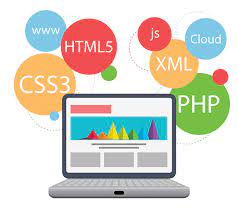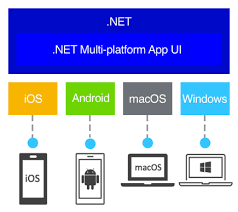Exploring the Top Software Tools for Web Development
The Best Software for Web Development
Web development is a dynamic and ever-evolving field that requires the right tools to create stunning websites and web applications. Choosing the best software can significantly impact your productivity and the quality of your work. Here are some of the top software tools that every web developer should consider:
Text Editors:
Text editors are essential for writing code efficiently. Some popular text editors among web developers include:
- Sublime Text: Known for its speed and versatility.
- Visual Studio Code: A powerful editor with a wide range of extensions.
- Atom: Highly customizable and beginner-friendly.
Integrated Development Environments (IDEs):
IDEs provide a comprehensive environment for web development, offering features like code completion, debugging, and version control integration. Some popular IDEs for web development are:
- WebStorm: Ideal for JavaScript development with smart coding assistance.
- PHPStorm: Specifically designed for PHP development with advanced features.
- Eclipse: A versatile IDE supporting multiple programming languages.
Version Control Systems:
A version control system is crucial for managing changes to your codebase efficiently. Git is the most widely used version control system in web development, and platforms like GitHub and Bitbucket offer hosting services for repositories.
Graphic Design Software:
To create visually appealing websites, graphic design software plays a vital role. Adobe Photoshop and Sketch are popular choices among web developers for designing website layouts, logos, and other graphics.
Browser Developer Tools:
Browsers come equipped with developer tools that allow you to inspect elements, debug JavaScript, analyze network activity, and optimize website performance. Chrome DevTools and Firefox Developer Tools are widely used by web developers.
Choosing the right software tools can streamline your workflow, enhance collaboration with team members, and improve the overall quality of your web projects. Experiment with different tools to find what works best for you and stay updated on new technologies shaping the field of web development.
Top Software and Tools for Web Development: FAQs Answered
- What software do most web developers use?
- What is the best software to build a website?
- Which tool is best for web development?
- Which platform is best for website development?
What software do most web developers use?
When it comes to the software that most web developers use, there are several popular tools that have become industry standards. Text editors like Sublime Text, Visual Studio Code, and Atom are widely favored for their efficiency and versatility in writing code. Integrated Development Environments (IDEs) such as WebStorm, PHPStorm, and Eclipse offer comprehensive features for coding, debugging, and version control. Git is the dominant version control system embraced by most developers for managing code changes effectively. Additionally, graphic design software like Adobe Photoshop and browser developer tools such as Chrome DevTools are commonly utilized to create visually appealing websites and optimize performance. Overall, these tools form the backbone of a web developer’s toolkit, enabling them to build innovative and functional web solutions efficiently.
What is the best software to build a website?
When it comes to building a website, the choice of software depends on various factors such as the complexity of the site, your familiarity with different tools, and your specific requirements. There isn’t a one-size-fits-all answer to the question of the best software for website development. Popular options include content management systems like WordPress for beginners looking for a user-friendly platform, while more advanced developers may prefer using frameworks like React or Angular for building dynamic web applications. Ultimately, the best software for building a website is one that aligns with your skill level, project goals, and desired features to create a successful and functional website.
Which tool is best for web development?
When it comes to the frequently asked question of which tool is best for web development, the answer often depends on individual preferences, project requirements, and familiarity with different software. Text editors like Sublime Text, Visual Studio Code, and Atom are popular choices for their speed and versatility. Integrated Development Environments (IDEs) such as WebStorm, PHPStorm, and Eclipse offer comprehensive features for coding and debugging. Version control systems like Git are essential for managing code changes effectively. Graphic design software such as Adobe Photoshop and Sketch can enhance website visuals. Ultimately, the best tool for web development is one that aligns with your workflow, enhances productivity, and helps you achieve your project goals efficiently.
Which platform is best for website development?
When it comes to choosing the best platform for website development, there is no one-size-fits-all answer. The choice of platform largely depends on the specific requirements of the project, the expertise of the development team, and the scalability needs of the website. Popular platforms like WordPress, Joomla, Drupal, and Magento offer user-friendly interfaces and extensive customization options for content management systems. For more customized web applications, developers often opt for frameworks like Laravel, React.js, AngularJS, or Ruby on Rails. Ultimately, selecting the best platform involves evaluating factors such as ease of use, flexibility, security features, and community support to ensure a successful website development process.




